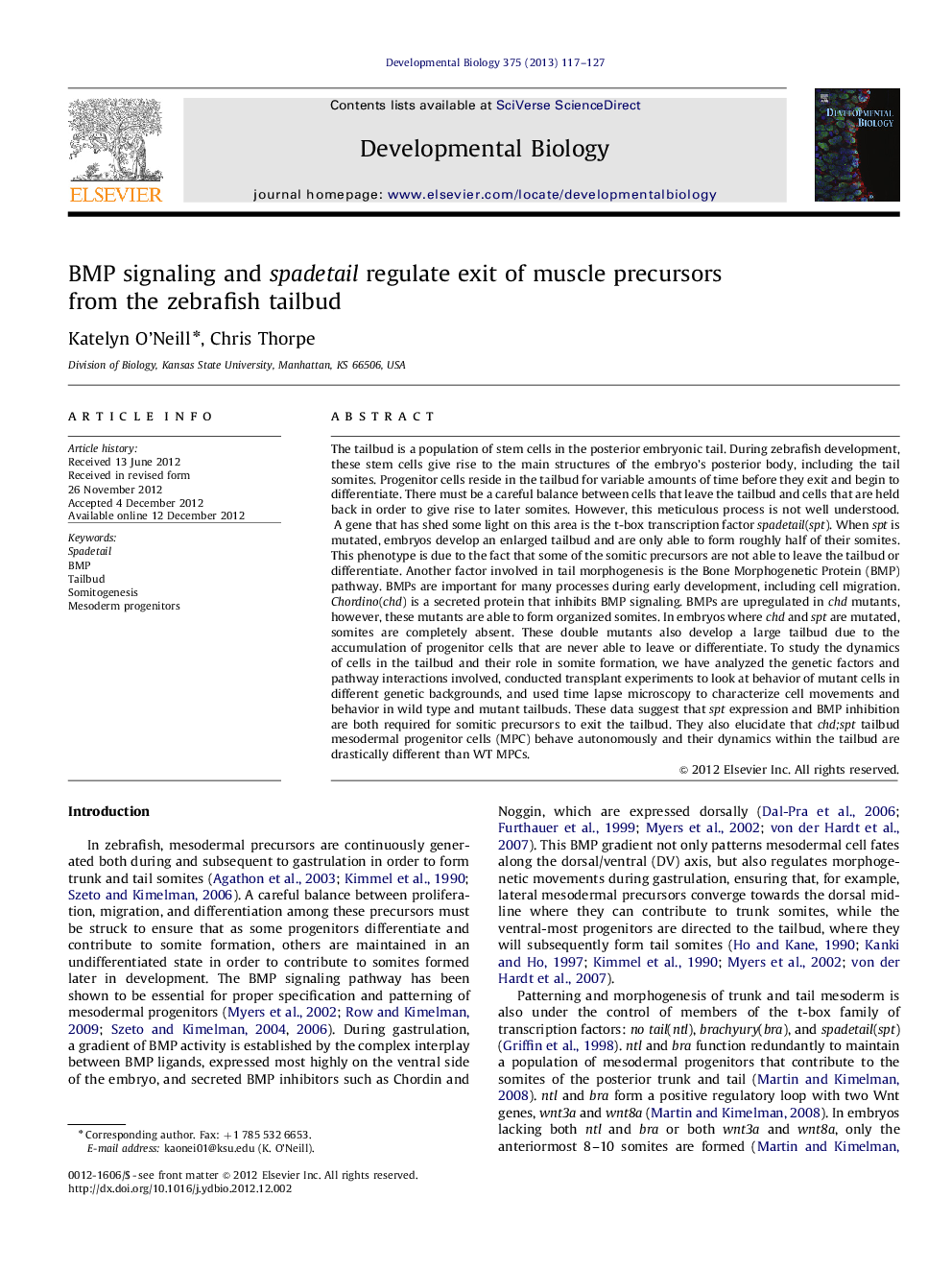| Article ID | Journal | Published Year | Pages | File Type |
|---|---|---|---|---|
| 2173181 | Developmental Biology | 2013 | 11 Pages |
The tailbud is a population of stem cells in the posterior embryonic tail. During zebrafish development, these stem cells give rise to the main structures of the embryo's posterior body, including the tail somites. Progenitor cells reside in the tailbud for variable amounts of time before they exit and begin to differentiate. There must be a careful balance between cells that leave the tailbud and cells that are held back in order to give rise to later somites. However, this meticulous process is not well understood. A gene that has shed some light on this area is the t-box transcription factor spadetail(spt). When spt is mutated, embryos develop an enlarged tailbud and are only able to form roughly half of their somites. This phenotype is due to the fact that some of the somitic precursors are not able to leave the tailbud or differentiate. Another factor involved in tail morphogenesis is the Bone Morphogenetic Protein (BMP) pathway. BMPs are important for many processes during early development, including cell migration. Chordino(chd) is a secreted protein that inhibits BMP signaling. BMPs are upregulated in chd mutants, however, these mutants are able to form organized somites. In embryos where chd and spt are mutated, somites are completely absent. These double mutants also develop a large tailbud due to the accumulation of progenitor cells that are never able to leave or differentiate. To study the dynamics of cells in the tailbud and their role in somite formation, we have analyzed the genetic factors and pathway interactions involved, conducted transplant experiments to look at behavior of mutant cells in different genetic backgrounds, and used time lapse microscopy to characterize cell movements and behavior in wild type and mutant tailbuds. These data suggest that spt expression and BMP inhibition are both required for somitic precursors to exit the tailbud. They also elucidate that chd;spt tailbud mesodermal progenitor cells (MPC) behave autonomously and their dynamics within the tailbud are drastically different than WT MPCs.
► Chordin and spadetail are required for somite formation. ► Spadetail and BMP inhibition are required for cells to exit tailbud. ► Exiting the tailbud is a cell autonomous function.
